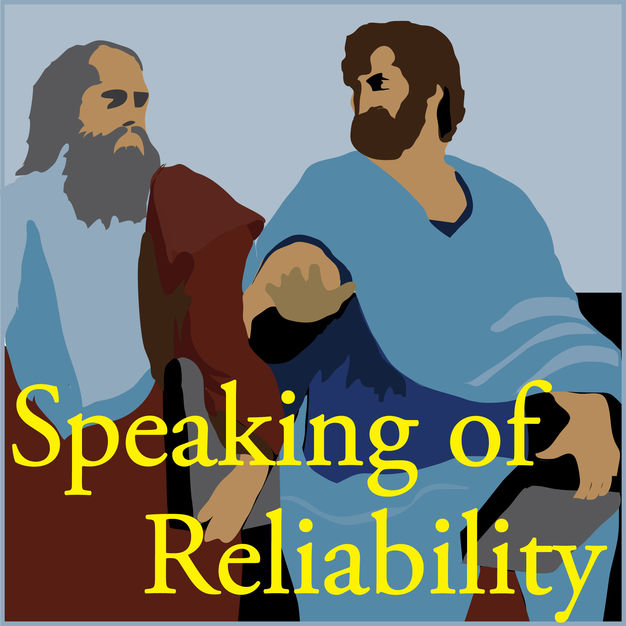
Speaking Of Reliability: Friends Discussing Reliability Engineering Topics | Warranty | Plant Maintenance
Reliability.FM: Accendo Reliability, focused on improving your reliability program and career
Gain the experience of your peers to accelerate improvement of your program and career. Improve your product development process, reliability or warranty performance; or your plant uptime or asset performance. Learn about reliability and maintenance engineering practical approaches, skills, and techniques. Join the conversation today.
- Starting a Consultancy
Starting a Consultancy
Abstract
Dianna and Fred discuss starting a consultancy.
Key Points
Join Dianna and Fred as they discuss starting a consultancy.
Interested in becoming a consultant? This episode dives into the realities of starting a consultancy. Listen to learn more about:
- the consulting career path, which is not always clear cut and involves a significant learning curve from being an employee to a business owner, requiring new skills and knowledge.
- how consultants need to be problem-solvers who can identify the root cause of a client’s issue and understand the business implications, not just treat the symptoms.
- why building a strong network, social profile, and online presence are crucial for attracting clients and establishing credibility in the competitive consulting landscape.
Show Notes
In this episode, Fred and Dianna discuss starting a consultancy, a topic prompted by a question from two individuals looking to start their own consultancy. They share their personal experiences and offer advice on the transition.
The conversation highlights the many challenges that come with managing the administrative side of consulting, including navigating business licenses, taxes, and banking. They touch on different business structures, such as sole proprietorships and limited liability companies. There are also different types of consultants, which they describe. They address some of the less glamorous aspects of consulting, such as dealing with long payment cycles and a lack of benefits. However, they also point out that consulting can provide flexible work options and opportunities to learn about different industries and ways of doing things.
There are two key pieces of advice:
- It is crucially important to network, build a social profile, and create a strong online presence to attract clients. They also underscore the need to be visible, such as through presenting papers at conferences, participating in committees, and building an email list or contact list.
- Act like consultants in your current roles, so you can gain experience and develop necessary skills. Fred's experience as an internal consultant at HP provided him with significant training in client interaction, problem-solving, and proposal writing, which he now applies in his consulting work. Dianna advises that people think of their internal customers as if they were external customers and start practicing. It can only help you today while also preparing you for a potential future career in consulting.
The post SOR 1030 Starting a Consultancy appeared first on Accendo Reliability.
27 December 2024, 11:50 am - Thermal HALT
Thermal HALT
Abstract
Kirk and Fred discuss a paper Kirk wrote about how thermal HALT can be a tool for finding marginal signal integrity issues.
Key Points
Join Kirk and Fred as they discuss Kirk’s paper on the use of thermal HALT, initially posted on Kirk’s website, acceleratedreliabilitysolutions.com, in 2018, and a re-edited version that Fred recently posted on Accendo Reliability’s website. You can find a link to the article in the show notes below.
Topics include:
- Kirk found little when he researched for information and data about how the physical electronics, especially the PWBA (printed wiring board assemblies) in high-speed digital systems, the variations in the board layers, and the surface roughness of the wiring traces affect the quality of the signal integrity (SI).
- As data bus speeds increase, effects causing errors in data transmission that were not significant at the time (when bus frequencies were in the megahertz range) became dominant at the gigahertz frequencies of today’s digital systems. Interconnect resistance, capacitance, and inductance are frequency-dependent, and as bus speeds increase and geometries continue to shrink, these variables may prove difficult if not impossible to model accurately.
- Thermal HALT and varying voltage and clock margins may simulate the lot-to-lot parametric variations in semiconductors and PWBA’s, resulting in SI errors, but since few companies disclose their most useful methodologies, published data remains scarce
Enjoy an episode of Speaking of Reliability. Where you can join friends as they discuss reliability topics. Join us as we discuss topics ranging from design for reliability techniques to field data analysis approaches.
Download Audio RSSShow Notes
Here is the link to Kirk’s article on Thermal HALT -A Tool for the Discovery of Signal Integrity and Software Reliability Issues on Accendo Reliability
Please click on this link to access a relatively new analysis of traditional reliability prediction methods article from the US ARMY and CALCE titled “Reliability Prediction – Continued Reliance on a Misleading Approach”. It is in the public domain, so please distribute freely. Trying to predict reliability for development is a misleading a costly approach.
You can now purchase the most recent recording of Kirk Gray’s Hobbs Engineering 8 (two 4 hour sessions) hour Webinar “Rapid and Robust Reliability Development 2022 HALT & HASS Methodologies Online Seminar” from this link.
For more information on the newest discovery testing methodology here is a link to the book “Next Generation HALT and HASS: Robust design of Electronics and Systems” written by Kirk Gray and John Paschkewitz.
The post SOR 1029 Thermal HALT appeared first on Accendo Reliability.
23 December 2024, 11:51 am - Dealing with Ongoing Changes
Dealing with Ongoing Changes
Abstract
Kirk and Fred discuss the challenge of adding changes to a product during the development process so that they can design and build the prototypes.
Key Points
Join Kirk and Fred as they discuss how companies are adding new features to stay competitive with market developments.
Topics include:
- Automobiles, especially EVs, are excellent examples of the evolution of technology. They are increasingly complex and dependent on electronics.
- Product engineering changes after introduction to the marketplace are required for many reasons, such as when a component supplier discontinues a part and substitutes a new part. Testing the reliability of every change in a large manufacturing company is challenging.
- Sometimes, the simplest designs are the most reliable and have the needed capabilities for most users. Many of today’s software applications have complex functional capabilities, yet most users do not need to access them.
- Engineering always has to deal with tradeoffs during each change in design or manufacturing and judgments about each risk. Many times, we have to make a fast decision on reliability risk based on experience, past field histories, and the collective knowledge of the engineering team.
Enjoy an episode of Speaking of Reliability. Where you can join friends as they discuss reliability topics. Join us as we discuss topics ranging from design for reliability techniques to field data analysis approaches.
Download Audio RSSShow Notes
Please click on this link to access a relatively new analysis of traditional reliability prediction methods article from the US ARMY and CALCE titled “Reliability Prediction – Continued Reliance on a Misleading Approach”. It is in the public domain, so please distribute freely. Trying to predict reliability for development is a misleading a costly approach.
You can now purchase the most recent recording of Kirk Gray’s Hobbs Engineering 8 (two 4 hour sessions) hour Webinar “Rapid and Robust Reliability Development 2022 HALT & HASS Methodologies Online Seminar” from this link.
For more information on the newest discovery testing methodology here is a link to the book “Next Generation HALT and HASS: Robust design of Electronics and Systems” written by Kirk Gray and John Paschkewitz.
The post SOR 1028 Dealing with Ongoing Changes appeared first on Accendo Reliability.
20 December 2024, 11:48 am - Executing the Plan
Executing the Plan
Abstract
Carl and Fred continue discussing the listener question about building an effective reliability program. After discussing some of the finer points about creating the reliability plan, the podcast focuses on execution of the reliability plan.
Key Points
Join Carl and Fred as they discuss some of the finer points about building a good reliability program. In this case, the company already has a reasonably solid testing program, but needs to put more effort into reliability in design.
Topics include:- How to supplement testing with Design for Reliability tasks.
- Consider developing a reliability plan year by year: first year tasks, second year tasks, etc.
- The objective is not to build a large reliability team; the objective should be to implement good reliability practices into the organization.
- Embed reliability into engineering
- We want to create reliability, not jobs
- Look for internal “champions” in senior management.
- Get value from early wins.
- Implementing reliability in design requires building relationships.
- The key to successfully implementing a reliability plan is to involve the key stakeholders in the creation of the plan.
- The reliability plan needs to be executed as part of project management.
- There will be hurdles that come up. The plan needs to be adjusted, as needed.
- Participate in the engineering project team meetings. Be part of the engineering process.
- Reliability looks at system as a whole, in addition to the parts.
- How to influence engineering to create reliable designs. Be engaged.
- Helping engineering establish correct special product and process characteristics that enable high reliability.
Enjoy an episode of Speaking of Reliability. Where you can join friends as they discuss reliability topics. Join us as we discuss topics ranging from design for reliability techniques to field data analysis approaches.
Download Audio RSSShow Notes
The post SOR 1027 Executing the Plan appeared first on Accendo Reliability.
16 December 2024, 11:58 am - Starting a Reliability Program
Building a Reliability Program
Abstract
Carl and Fred discuss a voice message received on the Accendo Reliability “speak pipe.” The caller is trying to build a reliability program at his company. The company already has a good testing program, but needs to supplement with support for reliability in design.
Key Points
Join Carl and Fred as they discuss how to build a reliability program, building on a good testing program that is in place. Where do you start?
Topics include:- How should you go about recruiting and building a reliability team?
- What reliability tools are most important?
- What will each new reliability team member bring to the company?
- Importance of following all of the six steps in the process to achieve high reliability.
- Begin with what you are trying to achieve, the reliability vision.
- Why a “gap assessment” is essential.
- Who has responsibility for supplier reliability?
- Importance of purchasing reliable parts, not just low cost.
- Consider what are the product characteristics that create reliable parts.
- Ask: how will the system or part will fail? How long will it last?
- What goes into creating a good Design for Reliability program?
- Guidance: get a good reliability plan in place, using the six step process.
- It doesn’t take a long time to develop a good reliability plan, maybe a couple of days.
Enjoy an episode of Speaking of Reliability. Where you can join friends as they discuss reliability topics. Join us as we discuss topics ranging from design for reliability techniques to field data analysis approaches.
Download Audio RSSShow Notes
The post SOR 1026 Starting a Reliability Program appeared first on Accendo Reliability.
13 December 2024, 11:55 am - Getting Started with Vibration Testing
Getting Started with Vibration Testing
Abstract
Chris and Fred discuss how we get started with vibration testing. We are often told (or feel like) we need to conduct vibration testing on new products and components. But what does that mean? Where do we start?
Key Points
Join Chris and Fred as they discuss how you start going about vibration testing … and when you should use it. And what you should use. Where do we start?
Topics include:
- Understand how your customers and users will ‘vibrate’ your product or device. And that means thinking about it from the perspective of the customer and user (… I know … scary!) And that means thinking about how it will be manufactured, stacked, stored, packed, transported, displayed in store, purchased, dropped on the way to the car, unpacked, installed, used, repaired (et cetera).
- Beware of standards. Too many organizations simply say that we ‘comply with standards’ and we are done! Be very careful of this. Standards are written by a bunch of volunteers, from various walks of life and backgrounds. There is no routine vetting for expertise (which is different to experience). And while many of these volunteers do have some useful knowledge, standards are often reduced to the lowest level of common agreement. So be very, very careful. To the extent that you should perhaps create our own standard.
- So what should you do? (1) understand your stresses … which could itself come from testing (2) avoid harmonics … which amplifies seemingly small stresses and (3) add margin … for those VITAL FEW stresses.
- Know what vibration tests exist. For example, Highly Accelerated Life Testing (HALT) is an incredibly helpful tool that uses vibration to find weak points. News to you? Check it out!
Enjoy an episode of Speaking of Reliability. Where you can join friends as they discuss reliability topics. Join us as we discuss topics ranging from design for reliability techniques to field data analysis approaches.
Download Audio RSSShow Notes
The post SOR 1025 Getting Started with Vibration Testing appeared first on Accendo Reliability.
9 December 2024, 11:11 am - MTBF and an Indicator
MTBF and an Indicator
Abstract
Chris and Fred discuss this thing called the MTBF … and how it (perhaps!) can be used in some reliability engineering applications … sometimes!
Key Points
Join Chris and Fred as they discuss if (and how) the MTBF can be useful for reliability applications. But haven’t we been really, really, really adamant that it is a bad thing? And to be clear … the MTBF stands for Mean Time Between Failure. Wouldn’t we want to measure the MTBF to see if things are failing less often?
Topics include:
- Can the MTBF be helpful? Perhaps. But only as an INDICATOR of system health. That is, if you try to improve the reliability, availability and maintainability performance of a product or system, you would expect the MTBF to improve (get better). So it then becomes an indicator that can help validate if there is an improvement in something.
- But the MTBF is not helpful as a PARAMETER. What does this mean? If you want to improve availability by optimizing servicing intervals, then the MTBF will not help you in any way. You instead need to understand the Rate of Occurrence of Failures after Servicing (ROFAS) of your system, model the maintenance-induced failure rate of your servicing activities and so on to find the right servicing interval. And once you do, you will see an improvement in overall system MTBF without the MTBF of any components being used to get this improvement. In fact … trying to use the MTBF in order to improve the MTBF … usually gets in the way of improvement.
- … and the MTBF comes with BAGGAGE! The MTBF is the most over-used, ridiculously simplified metric in the world of reliability engineering. Many people believe that the reliability IS the MTBF. It isn’t. Trying to do reliability and availability improvement using the MTBFs of components and system elements NEVER works. It hides the information you need to make the right decisions as it is over-simplified. And so it is very hard for an organization to have the MTBF as an indicator to NOT have its toxic over-simplification seep through the rest of reliability, availability and maintainability decision-making. Which is why we are VERY CONCERNED WHEN ANY ORGANIZATION USES IT!
- What’s the answer? Start with understanding what decision you are trying to make. What you are trying to improve. What the value of that improvement is. And then truly understand HOW your system will likely fail (the ‘vital few’). Study and understand those ‘vital few’ and what makes them happen. Before you try and characterize them with a number, try and remove the ‘root causes’ that allow them to happen. Quickly. And once you know your ‘vital few’ and have exhausted all the ‘fast, simple and cheap’ corrective actions that will improve reliability, THEN characterize the likelihood of failure over time (which needs more than the MTBF). And keep going!
Enjoy an episode of Speaking of Reliability. Where you can join friends as they discuss reliability topics. Join us as we discuss topics ranging from design for reliability techniques to field data analysis approaches.
Download Audio RSSShow Notes
The post SOR 1024 MTBF and an Indicator appeared first on Accendo Reliability.
6 December 2024, 11:09 am - What Counts
What Counts
Abstract
Carl and Fred discuss a listener question about what type of field or test issues to count when assessing or estimating reliability in a project.
Key Points
Join Carl and Fred as they discuss how to collect and maintain field and test data when calculating or estimating reliability.
Topics include:- Do you consider only failures that occur when the product is used as specified?
- Or, do you also consider failures that occur during misuse of the product?
- What types of field returns would you not use when estimating reliability?
- You have to define the environmental and operating conditions.
- Carefully consider which potential misuses will be included in reliability estimation.
- Err in the direction of including unintended uses in the failure database, so that a business decision can be made on warranty or customer service.
- Usage environments are a distribution of data, and it is important to know the nature of the distribution.
- ISO standards use the term “anticipated misuse.”
- You need a broad application of what you keep track of in your reliability database, however this doesn’t mean you have to take action on everything in the database, Pareto still applies. Business decisions are important.
- Field data can be filled with noise. Learn how to differentiate signal from noise.
- If someone complains or returns a product for any reason, learn why, so you can make informed decisions.
Enjoy an episode of Speaking of Reliability. Where you can join friends as they discuss reliability topics. Join us as we discuss topics ranging from design for reliability techniques to field data analysis approaches.
Download Audio RSSShow Notes
The post SOR 1023 What Counts appeared first on Accendo Reliability.
2 December 2024, 11:50 am - Facilitator and Deep Understanding
Facilitator and Deep Understanding
Abstract
Carl and Fred discuss an Inside FMEA reader question: “does a facilitator have to have a deep understanding of the subject matter they are facilitating?”
Key Points
Join Carl and Fred as they discuss the level of knowledge a facilitator must have about there subject being facilitated, in order to be successful.
Topics include:- What type of knowledge is helpful to the facilitator?
- It is essential that the facilitator have excellent facilitation skills.
- Having no knowledge at all of the subject being facilitated does not work.
- It is not necessary for a facilitator to have deep or expert knowledge of the subject matter.
- The laser is in between these extremes.
- The best answer to the question being posed is that the facilitator should have sufficient overview of the subject, so he or she does not impede the meetings (team members feel like they have to”educate” the facilitator) and can guide the team to good thinking and results.
- Avoid “expert” facilitators who know nothing about the subject being facilitated. Minimum is to know the scope, language, and a high-level overview of the topic. This might take a few hours of immersion.
- Avoid having the subject matter expert (who is unskilled in facilitation) being the team facilitator, because the team needs good facilitation to get to its best thinking.
- The skills of facilitation are covered in the series called “FMEA Facilitation Series,” which are part of Inside FMEA. A link is in the show notes.
- Example facilitation errors are discussed, along with comments on how to address.
Enjoy an episode of Speaking of Reliability. Where you can join friends as they discuss reliability topics. Join us as we discuss topics ranging from design for reliability techniques to field data analysis approaches.
Download Audio RSSShow Notes
To read the “FMEA Facilitation Series” use this link: https://accendoreliability.com/inside-fmea-index-articles/
and cursor down the the facilitation series of articles.
The post SOR 1022 Facilitator and Deep Understanding appeared first on Accendo Reliability.
29 November 2024, 11:46 am - Influence vs Facilitation
Influence vs Facilitation
Abstract
Dianna and Fred discuss influence vs. facilitation and the difficulty of trying to do both at once.
Key Points
Join Dianna and Fred as they discuss influence vs. facilitation, comparing the roles of when you are a contributor vs. facilitating with peers.
Topics include:
- The need to be a facilitator when in quality engineering or reliability engineering
- The challenges of stepping out of the facilitator role to join the discussion as an expert
- Tricks to facilitating, including planning ahead and making ideas visible
- Home/school club, chalkboards, project management
Enjoy an episode of Speaking of Reliability. Where you can join friends as they discuss reliability topics. Join us as we discuss topics ranging from design for reliability techniques to field data analysis approaches.
Download Audio RSSShow Notes
Reliability engineers and quality engineers often find themselves needing to facilitate a meeting. Root cause analysis, continuous improvement, and other scenarios require teamwork. A challenge can be playing the facilitator role while you also want to be a contributor. These roles can be at odds with one another. Facilitators guard the process and ensure everyone is heard. Contributors have ideas and opinions to share with the team that help define the solution.
When you must facilitate, there are ways to shift from one role to another. Fred and Dianna talk about several ways to make the shift.
Facilitating itself is difficult and requires skill. Some suggestions they have:
- Plan ahead
- Define the scope well
- Know how decisions will be made
- Follow up with actions
One of the biggest takeaways: make it visible to everyone. Quality tools are examples of models and templates that that work.
Whether you facilitate in-person or are using remote tools, be sure you understand how to use the tools. Don’t let your misunderstanding about how to use tools create disruptive pauses in the process.
In conclusion, be cautious about the roles you play, and make it clear to the team which role you’re playing when. And you can enhance your career if you practice your facilitator skills.
Do you have any success stories to share?
The post SOR 1021 Influence vs Facilitation appeared first on Accendo Reliability.
25 November 2024, 11:35 am - 8D with 'G'
8D with ‘G’
Abstract
Dianna and Fred introduce a special guest, ‘G’, and talk about the 8 Disciplines method of problem solving.
Key Points
Join Dianna and Fred as they discuss 8D with ‘G’, Google’s AI assistant.
Topics include:- Problem solving and the benefits of a structured approach like 8D (8 Disciplines)
- The hardest parts about RCA (root cause analysis)
- The steps of the 8D process
- Potential uses for AI
Enjoy an episode of Speaking of Reliability. Where you can join friends as they discuss reliability topics. Join us as we discuss topics ranging from design for reliability techniques to field data analysis approaches.
Download Audio RSSShow Notes
Fred and Dianna discuss problem solving, in general, and the benefits of a structured approach like 8D.
They invite a special guest to the show to provide a different perspective. G is an advanced language model developed by Google AI. Capable of understanding and responding to a wide range of prompts and questions, G offers a unique and informative conversational experience.
The three hosts talk about:
- The hardest parts about root cause analysis, which is defining the problem well. Part of that is not jumping to conclusions.
- How RCA (root cause analysis) can change based on the intent of the researcher. For someone in a maintenance role, the focus may be on identifying the problem part and replacing it as quickly as possible. For an engineer, the focus will be on what caused that failure to occur, including stresses like special use cases and environment.
- Why 8D (the 8 disciplines) helps with RCA by providing a structured approach. They list the 8 steps, including step 0: preserving the evidence for investigation. They also talk about how to do the last step and the importance of not skipping it.
- Not seeing success with point systems and gamification!
Fred and Dianna also talk about ways to use interactive AI, like G.
- How to set the stage with prompting.
- Use it to help get unstuck.
- Try asking AI to challenge your assumptions with more technical issues.
Please let us know what you thought of this episode. Share your questions and comments, below!
The post SOR 1020 8D with ‘G’ appeared first on Accendo Reliability.
22 November 2024, 11:32 am - More Episodes? Get the App
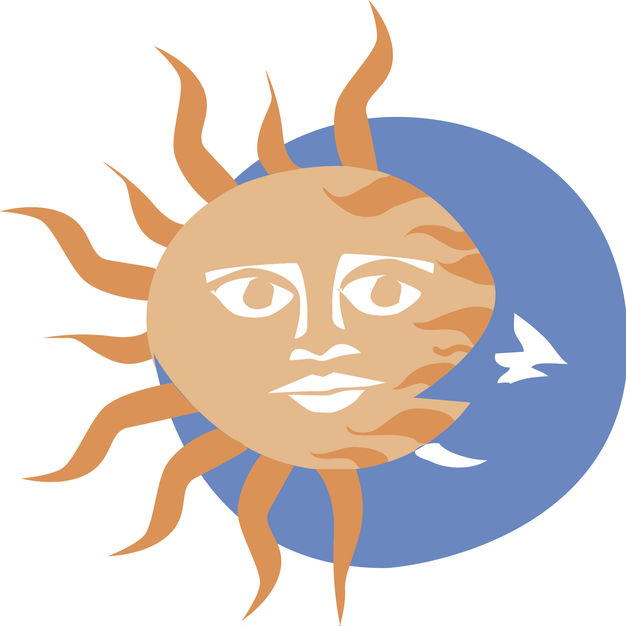 Accendo Reliability Webinar Series
Accendo Reliability Webinar Series
 Dare to Know: Interviews with Quality and Reliability Thought Leaders | Hosted by Tim Rodgers
Dare to Know: Interviews with Quality and Reliability Thought Leaders | Hosted by Tim Rodgers
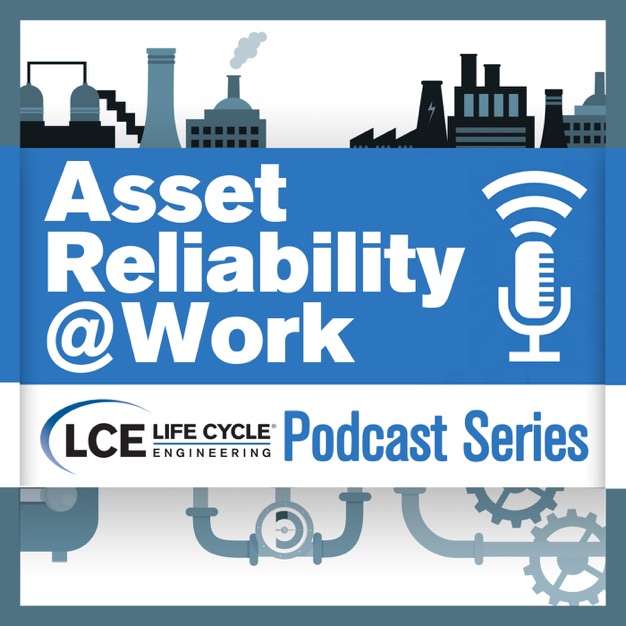 Asset Reliability @Work | Sharing insights and best practices for improving asset performance and reliability
Asset Reliability @Work | Sharing insights and best practices for improving asset performance and reliability
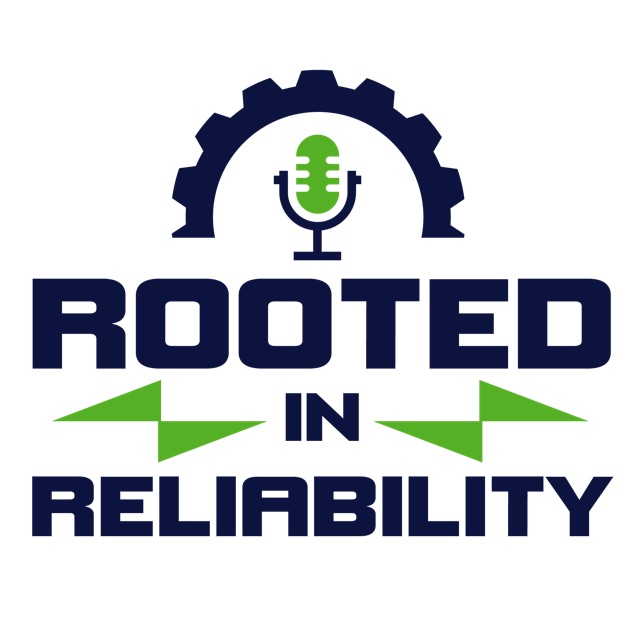 Rooted in Reliability: The Plant Performance Podcast
Rooted in Reliability: The Plant Performance Podcast
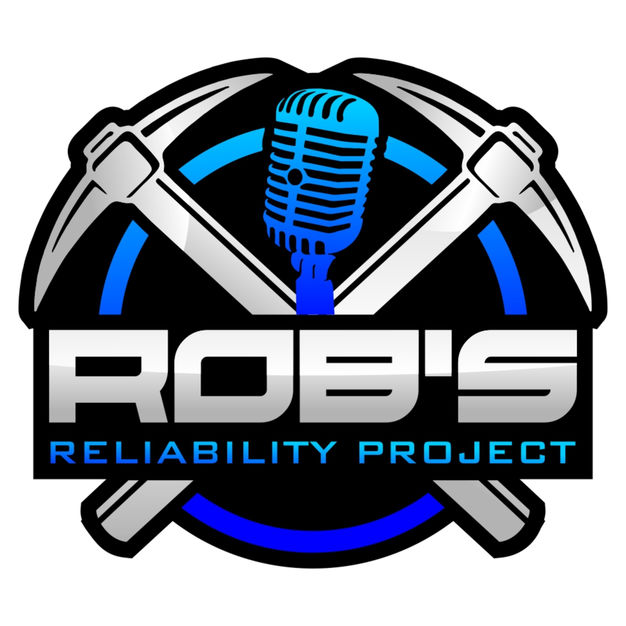 Rob's Reliability Project
Rob's Reliability Project
Your feedback is valuable to us. Should you encounter any bugs, glitches, lack of functionality or other problems, please email us on [email protected] or join Moon.FM Telegram Group where you can talk directly to the dev team who are happy to answer any queries.